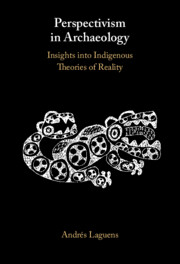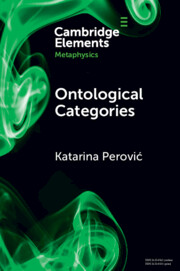228 results
1 - Why Language Assemblages?
-
- Book:
- Language Assemblages
- Print publication:
- 27 June 2024, pp 1-19
-
- Chapter
- Export citation
2 - Language, Knowledge, Myths and Being
-
- Book:
- Language Assemblages
- Print publication:
- 27 June 2024, pp 20-49
-
- Chapter
- Export citation
Chapter 10 - Being and Existence in the Consolation of Philosophy
-
-
- Book:
- Boethius’ ‘Consolation of Philosophy’
- Published online:
- 23 May 2024
- Print publication:
- 30 May 2024, pp 169-185
-
- Chapter
- Export citation
The ‘Mesopotamian trap’: from the ‘first’ international to dynamic multiplicity
-
- Journal:
- International Theory , First View
- Published online by Cambridge University Press:
- 30 May 2024, pp. 1-33
-
- Article
-
- You have access
- Open access
- HTML
- Export citation
5 - Sustainable Development and the Turn to African Legal Ontologies
- from Part III - Thinking Alternatives
-
- Book:
- Sustainable Development, International Law, and a Turn to African Legal Cosmologies
- Published online:
- 16 May 2024
- Print publication:
- 23 May 2024, pp 201-244
-
- Chapter
- Export citation
Integration of product development data for further ontological utilization
-
- Journal:
- Proceedings of the Design Society / Volume 4 / May 2024
- Published online by Cambridge University Press:
- 16 May 2024, pp. 463-472
-
- Article
-
- You have access
- Open access
- Export citation
Automatic knowledge graph creation from engineering standards using the example of formulas
-
- Journal:
- Proceedings of the Design Society / Volume 4 / May 2024
- Published online by Cambridge University Press:
- 16 May 2024, pp. 423-432
-
- Article
-
- You have access
- Open access
- Export citation
Data- and simulation-based material behaviour prediction
-
- Journal:
- Proceedings of the Design Society / Volume 4 / May 2024
- Published online by Cambridge University Press:
- 16 May 2024, pp. 563-572
-
- Article
-
- You have access
- Open access
- Export citation
A theory landscape of design: mapping the theoretical discourse of the discipline
-
- Journal:
- Proceedings of the Design Society / Volume 4 / May 2024
- Published online by Cambridge University Press:
- 16 May 2024, pp. 145-154
-
- Article
-
- You have access
- Open access
- Export citation
Future design narratives: an interdisciplinary approach to a decolonial glossary
-
- Journal:
- Proceedings of the Design Society / Volume 4 / May 2024
- Published online by Cambridge University Press:
- 16 May 2024, pp. 125-134
-
- Article
-
- You have access
- Open access
- Export citation
Towards an ontology to capture human attributes in human-robot collaboration
-
- Journal:
- Proceedings of the Design Society / Volume 4 / May 2024
- Published online by Cambridge University Press:
- 16 May 2024, pp. 2585-2594
-
- Article
-
- You have access
- Open access
- Export citation
Finite-element analysis case retrieval based on an ontology semantic tree
-
- Article
-
- You have access
- HTML
- Export citation
Semantic agent framework for automated flood assessment using dynamic knowledge graphs
-
- Journal:
- Data-Centric Engineering / Volume 5 / 2024
- Published online by Cambridge University Press:
- 10 May 2024, e14
-
- Article
-
- You have access
- Open access
- HTML
- Export citation
5 - Philosophy and the Pluralistic Hypothesis
-
- Book:
- Exploring Religious Pluralism
- Published online:
- 14 March 2024
- Print publication:
- 21 March 2024, pp 64-86
-
- Chapter
- Export citation
Chapter 6 - Ethical Naturalism
-
- Book:
- Epicurean Justice
- Published online:
- 07 March 2024
- Print publication:
- 14 March 2024, pp 128-160
-
- Chapter
- Export citation
Evaluating Datalog Tools for Meta-reasoning over OWL 2 QL
-
- Journal:
- Theory and Practice of Logic Programming / Volume 24 / Issue 2 / March 2024
- Published online by Cambridge University Press:
- 07 March 2024, pp. 368-393
-
- Article
-
- You have access
- Open access
- HTML
- Export citation
Chapter 15 - Methodologies Dialogue:
- from Part III - Interpreting
-
-
- Book:
- The Cambridge Guide to Mixed Methods Research for Theatre and Performance Studies
- Published online:
- 01 February 2024
- Print publication:
- 08 February 2024, pp 284-299
-
- Chapter
- Export citation
Chapter 2 - Carnap Is Not against Metaphysics
- from Part I - Philosophy in New Dress
-
-
- Book:
- Interpreting Carnap
- Published online:
- 01 February 2024
- Print publication:
- 08 February 2024, pp 32-49
-
- Chapter
- Export citation

Perspectivism in Archaeology
- Insights into Indigenous Theories of Reality
-
- Published online:
- 01 February 2024
- Print publication:
- 08 February 2024

Ontological Categories
- A Methodological Guide
-
- Published online:
- 31 January 2024
- Print publication:
- 29 February 2024
-
- Element
- Export citation



